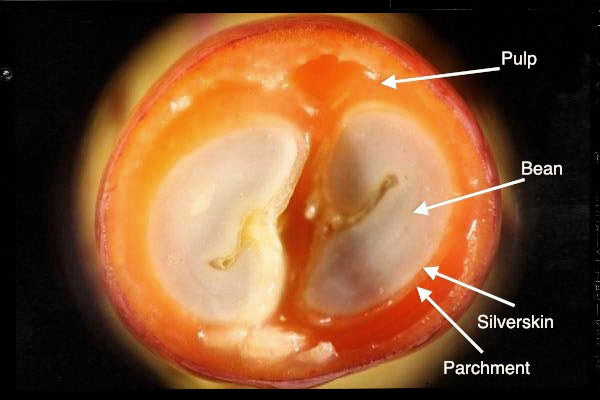
The coffee bean. Placing it into a grinder and pulverizing it into grounds is a dramatic transformation, to be sure, but it really pales in comparison to all the things your friend, the coffee bean, has been through before it arrived in your kitchen.


Your coffee bean was born on a tree, inside fruit, a cherry it is called. Like most fruit, it signaled the promisenot quite an inevitabilityof its arrival with a blossom, a pretty white flower. It grew into a green cherry, which then turned yellow and eventually a darkening red. With a few exceptions, specialty coffee is picked when it is ripe red, which means it must be picked by hand because one branch can at the same time feature ripe and unripe fruit. Now, if one does not care so much about quality, one can simply strip all the cherries, ripe or not, from a branch, saving time and money. So you see, your specialty coffee bean was more expensive than lower quality coffee from the day it was picked.

Your coffee cherry is then transported, by truck or wagon or donkey or bicycle or just old fashion walking to a mill.

At this point, it has quite the anatomy. The outside, the red part, is, not surprisingly, called the skin. It is very similar to skin you encounter with other fruit of a similar size and appearance. Under the skin is the pulp. Again, it is not dissimilar from the mesocarp of a cherry, though firmer and denser. It is edible and some people find it vaguely reminiscent of banana due to the presence of potassium.

The skin and pulp are removed during milling, using either a wet process (also known as washed) or dry process (also known as unwashed or natural), or a combination of both. Regardless of the process, your coffee bean is still hidden underneath another covering called parchment, which is something like the covering you find on a peanut inside the shell, but thicker. This is removed, as you might guess, by a process called hulling. At this point, the only thing remaining between you and your coffee bean is a very thin layer of something called silver skin.

Sometimes the silver skin is polished off and sometimes it is not. In any case, most of what remains of the silver skin is separated from the bean during the roasting process. Some of it simply burns off and some is collected in something called a chaff can near the roaster.

This is the last transformation of your coffee bean before it is turned over to you. The green bean is essentially toasted inside the coffee roaster, losing its water weight and turning to one of many shades of brown.

The transformation of a green coffee bean into a roasted coffee bean is, perhaps, the most magical thing to happen to your coffee bean apart from simply being born on a tree. But all of this work, all these changes that happen from the farm to the grinder, are still just the caterpillar. The butterfly is the beverage in your cup.



